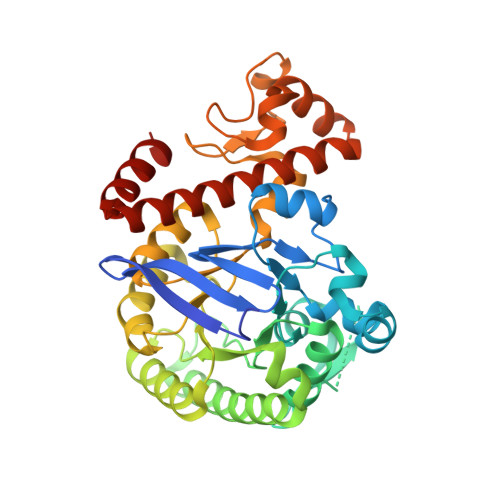Beyond Affinity: Enthalpy-Entropy Factorization Unravels Complexity of a Flat Structure-Activity Relationship for Inhibition of a tRNA-Modifying Enzyme.
Neeb, M., Betz, M., Heine, A., Barandun, L.J., Hohn, C., Diederich, F., Klebe, G.(2014) J Med Chem 57: 5566-5578
- PubMed: 24960372
- DOI: https://doi.org/10.1021/jm5006868
- Primary Citation of Related Structures:
4Q4O, 4Q4P, 4Q4Q, 4Q4R, 4Q4S - PubMed Abstract:
Lead optimization focuses on binding-affinity improvement. If a flat structure-activity relationship is detected, usually optimization strategies are abolished as unattractive. Nonetheless, as affinity is composed of an enthalpic and entropic contribution, factorization of both can unravel the complexity of a flat, on first sight tedious SAR. In such cases, the binding free energy of different ligands can be rather similar, but it can factorize into enthalpy and entropy distinctly. We investigated the thermodynamic signature of two classes of lin-benzopurines binding to tRNA-guanine transglycosylase. While the differences are hardly visible in the free energy, they involve striking enthalpic and entropic changes. Analyzing thermodynamics along with structural features revealed that one ligand set binds to the protein without inducing significant changes compared to the apo structure; however, the second series provokes complex adaptation, leading to a conformation similar to the substrate-bound state. In the latter state, a cross-talk between two pockets is suggested.
Organizational Affiliation:
Institut f¨¹r Pharmazeutische Chemie, Philipps-Universit?t Marburg , Marbacher Weg 6, 35032 Marburg, Germany.



















